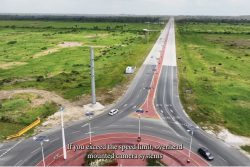Dear Editor,
The recently published Bank of Guyana Quarterly report corroborates what I have written in the past cautioning that the Granger administration’s policies were creating the environment for a, disruptively painful, and avoidable economic recession. Indeed, what could have been avoided, will now be made worse by the COVID-19 pandemic. Guyanese must not be hoodwinked into thinking that the dismal state of the economy, is purely the impact of the COVID-19 pandemic. Guyana’s economy had been in distress up to the end of the first quarter of 2020, the result of the poor economic management and policy failure of the Granger administration.
I have written extensively on the policy decisions I believe were responsible for dragging the economy into decline. Prominently among ill-conceived schemes of the Granger Administration was the downsizing of the sugar industry. This ill-advised series of actions immediately created massive unemployment and a significant loss of export earnings and foreign currency. Another of the Granger administration’s atrocities was the starving of the agriculture sector of essential funding. Guyana’s non-traditional agriculture sub-sector is predominantly small-scaled. Reduced fiscal outlays to the sub-sector therefore impact small farmers in the most direct of ways in addition to the local economy they reside in and serve.
As if that were not enough, the totally unimaginative Granger administration sought to ’tax its way to prosperity’ by imposing burdensome taxes on households through the elimination of critical VAT exemptions and the exponential increases in service fees.
The BOG report shows that Guyana’s foreign asset holdings at the end of the first quarter to 2020 declined by another 5.6% or almost US$1M; it has declined by more than G$23 billion or more than 18% from the end of the first quarter of 2015. What does this mean and why it is important? It means over the last five years, the government liquidated G$23 billion worth of foreign assets holdings. If the economy was as rock solid as Minister Jordan proclaimed in successive budget speeches, why sell foreign asset holdings? While there are a few good reasons to sell foreign assets in times of a growing economy, when you consider the sale of these assets alongside the other policy decisions, such as those mentioned above, it is quite evident that the likely reason for doing so was to replace lost foreign currency earnings in the foreign exchange market to keep the exchange rate stable.
In the first quarter of 2020, the total foreign exchange sales were greater than purchases, resulting in a net sale of US$49.5 million, notes the Bank. This means financial institutions sold more of their foreign currency holdings to meet market demands. Other economic indicators also confirmed the underlying distress of the economy. The reports show that over the 2015 to 2020 period, non-performing loans increased to 10.1 percent; this is likely to get worse as the real economy continues on a downslide. Further, another G$12 billion has been added to the deficit in the public sector savings account bringing the total deficit at the end of the first quarter to roughly G$83 billion. The overall balance of payments deficit worsened as a result of lower capital inflows. International reserves at the end of the first quarter were sufficient to cover only half of the three months of imports considered to be the adequate reserve level.
None of this is surprising. Sugar exports which in 2014 earned foreign currency equivalent to over G$18 billion have gradually declined to less than G$6 billion in 2019 and is well on its way to earning less in 2020. Rice exports which have been one of the main foreign currency earners over the last five years still earn less in a year than it did in 2014. In fact, from 2011 to 2014, both the quantity and value of rice exported grew uninterruptedly. The same is true of timber exports. From 2011 to 2014, the value of timber exports grew uninterruptedly and peaked at G$11 billion but has gradually declined to less than G$7 billion in 2019 and is likely to continue down this path. All of this had and continues to have a material impact on the country’s foreign currency market. Gold is an outlier in the export sector; its exports and earnings have exploded since 2015 and continue to grow. Gold production, however, is a high-risk activity and an unreliable and unstainable source of earnings.
Except for the services sector, the ‘agriculture, fishery, and forestry’ sector is the largest employer. Naturally, their declining performance has serious consequences for jobs, household incomes, livelihood, and poverty. Despite good performance in the mining and quarrying sector, it is not a major employer and therefore cannot replace the jobs and income losses from the other sectors. The same is true for the oil sector; it is a highly machine-driven sector and would not be a major employer of labour or a source of household incomes. Currently, proceeds from this sector are not accessible for use in the economy owing to the absence of a legitimate government. And even with a legitimate government, the use of oil proceeds would be somewhat restrictive. In other words, the oil sector will not be the saviour of the economy; it is not a substitute for good economic management and policies. It always was and remains a most potent sector for Guyana to build a strong and vibrant economy if properly managed.
The state of the economy is likely to worsen more than casually projected.
You are probably wondering why up to now I have not mentioned the real sector production figures; after all, the most common measure of economic performance is growth in the productive sectors. We simply do not know the true state of the productive sectors because the actual data is not available. Even the Bank of Guyana is not fully apprised of the true state of the productive sectors. The Bureau of Statistics which operates under the Ministry of Finance is by statute the designated body that is responsible for producing production data on the economy. In previous years, the Bank’s first quarter report would generally have numbers, even if preliminary, for the real sectors but this edition does not. This is likely due to staffing disruptions in the responsible entities over the last few months during which time the data would normally be compiled.
Without the necessary data, the Bank is left with very little to make its assessment. In the Overview of the Bank’s report, paragraph two states “Preliminary estimates suggest that the Guyanese economy recorded mixed output performance in the major sectors at end-March 2020 …”. In the footnote of that same page, it qualified “preliminary” stating that “There was not much production data available up to the time”. It is unclear what “not much” means in this context. The remainder of the said paragraph states for example that output in the agriculture sector increased, gold output increased, bauxite output decreased, and the services and construction sector experienced mixed performance.
It is important for stakeholders to understand that these are merely assumptions, estimates, and projections based on “not much” data. And in a time of economic uncertainty where the economy is already struggling with structural stresses, much can change in a short time. To be clear, the Bank states “It is assumed that the agriculture sector experienced increased production of rice and other crops …”, “…output of forestry and sugar most likely declined in the first quarter of 2020”, “…In the mining and quarrying sector, output of gold is estimated to have expanded for the first quarter…”, “The services and construction sectors are projected to have registered mixed output performance…”, and “The manufacturing sector most likely recorded an expansion in output …”. The fact remains we simply do not know with any degree of certainty the state of the real productive sectors.
The distressed state of the economy at the end of the first quarter of 2020 was the result of years of policy decisions, albeit poor ones, of a legitimate government (for the most part), a sitting parliament, and multiple national budgets. Imagine what the economic reality would be in subsequent quarters given that it has been more than a year since Guyana has been without a parliament, without a legitimate government, without a national budget, and facing a public health pandemic.
Yours faithfully,
Dhanraj Singh
Economist and Executive Director
Guyana Budget Policy Institute









